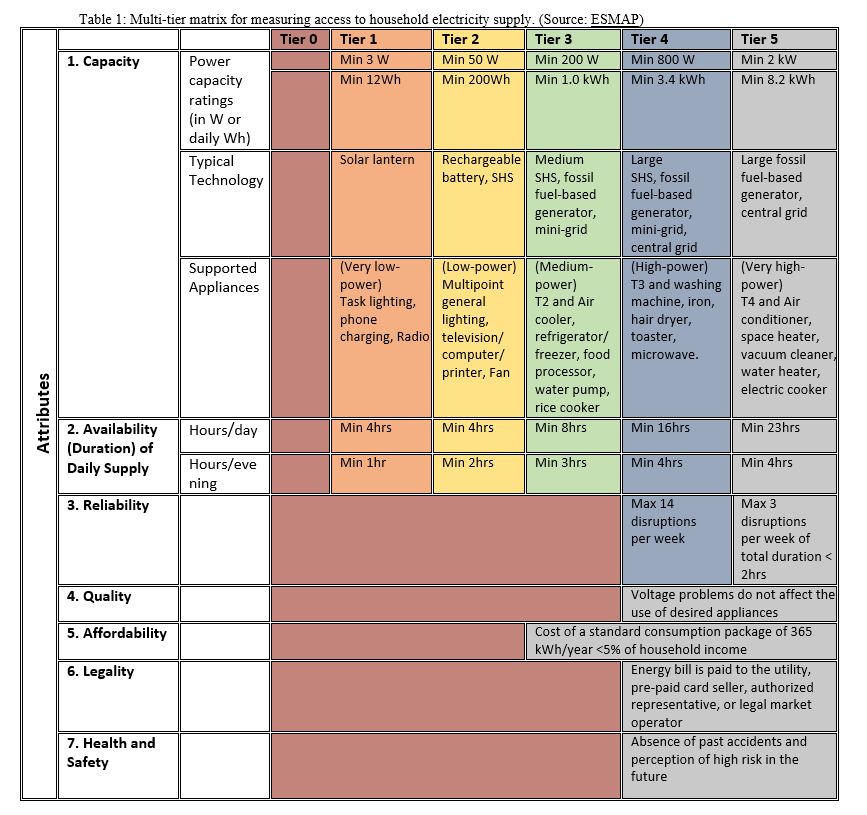Why Climate Change Adaptation needs to be energy-driven and gender-responsive
May 13, 2023 10:58 PM

Climate change is one of the most pressing global challenges today, with the world witnessing an unprecedented increase in the frequency and severity of natural disasters in recent years. Amongst the countries most vulnerable to climate change, Pakistan has been facing severe impacts such as flooding, droughts, food insecurity, water scarcity, heatwaves, and public health challenges. While mitigation strategies can help reduce some of the impacts of such extreme weather events, climate adaptation is now a necessity as many of these impacts pose imminent and unavoidable threats. Adaptation involves taking actions to reduce the negative impacts of climate change by adjusting to new or changing conditions and developing the resilience to bounce back. As climate change continues, it will exacerbate existing problems and create new ones requiring effective Climate Change Adaptation (CCA). And for this, energy is key.
The Energy needs of Adaptation
Many of the CCA strategies proposed by experts are dependent on energy-driven solutions and technologies. For example, adapting to climate change in Pakistan requires promoting efficient farm machinery, regulating the use of information and communication technologies, enhancing farmers’ and other workers’ education, and setting up off-grid renewable energy systems such as solar water management and desalination plants. Policies and interventions to introduce groundwater pumping infrastructure, promoting efficient irrigation practices, and using solar-powered water recycling and purification plants are also highlighted to address water supply challenges. Increasing the resilience of the health sector, building more functioning schools and hospitals, and introducing early warning systems are also emphasised. All such measures are directly or indirectly reliant on energy that must be affordable, reliable, sustainable, and clean.
The link between energy access and climate change adaptation cannot be emphasised enough. Previous studies have shown how access to energy is a key enabler for development, improving people’s knowledge, awareness and preparedness, increasing productivity and enhancing their socio-economic position, thereby building resilience against climate change at the household, community and regional level. In Pakistan’s National Climate Change Policy (2021), while the use of technologies and digital services for adaptation is recognised, the policy fails to fully capture the critical links between energy and CCA, in how access to energy enables different capacities for climate adaptation.
Not only this, it’s important to recognise that energy access can be vastly different for different people in different regions. The capacity to adapt to climate change depends on the level and quality of energy access available. For example, rural communities, dependent on the agriculture and livestock sector that are particularly prone to climate hazards, often lack access to basic energy services, further compounding their vulnerability. In slum and low-income urban settlements, precarious infrastructures and intermittent supply can mean greater vulnerability to rising temperatures and heatwaves. The unequal impact of climate change across various socio-demographic groups highlights that it is not solely an environmental concern, but also a social one.
Climate change adaptation measures are not gender-neutral
Many studies show that climate change is having a disproportionate impact on women. Those engaged in agriculture are strongly affected by climate change as they often have the least resources to adapt in a sector that is highly climate sensitive. While men often migrate in search of better economic opportunities, women tend to be left behind with the dual burden of managing crops and household chores. Droughts, which lead to water scarcity, place extra burdens on women, who are often responsible for fetching water, caring for the sick, and providing food for their families. Similar challenges are also faced by low-income urban women who are equally burdened by unreliable utility supplies and responsibilities of care work. Such issues often lead to health problems and prevent women from pursuing educational and income-generating activities. In remote areas, women and girls also face greater risks of gender-based violence as they travel long distances in search of water. Floods, on the other hand, lead to water stagnation, which can spread diseases such as malaria. Pregnant women are particularly vulnerable to symptomatic malaria. Temperature elevations pose a further threat to poor urban women living in impoverished conditions and those working in the fields in rural areas, putting both at risk of heat stress, dehydration, headaches, and kidney disease. In all this, lack of access to energy exacerbates the situation, making it harder for women to adapt to the changing climate.

Women in Pakistan are particularly vulnerable to the impacts of climate change due to their limited access to resources and decision-making power, especially in poor urban and remote rural contexts. The differences in CCA measures between men and women result from their different gender roles in society and gendered barriers under prevailing socio-cultural norms. In regions where strong gender imbalances persist, climate change exacerbates women’s marginalization, making women more vulnerable during extreme events when assets and cultivable land are lost, and routine practices are disrupted. Although the national policy recognizes the need to address these gendered dimensions of climate change, there is still a long way to go in terms of empowering women for CCA, specifically through their improved access to energy.
Creating an energy-driven Climate Change Adaptation Roadmap for women
In my research with collaborators from the Lahore University of Management Sciences, we are developing a Climate Change Adaptation Roadmap for women in Pakistan that looks at the different CCA strategies and tools that can be adopted and implemented at different levels of access to energy, using the World Banks Multi-Tier Framework for energy access. As previously explained, this stratification is important because different electricity services are enabled at different tiers (levels) of access that correspond to specific CCA strategies. For example, as Table 1 shows, Tier 1 access corresponds to basic task lighting and mobile phone charging and therefore allows for adaptation strategies focused on indoor lighting for women’s productive work, home-based income generation, and education, as well as their improved communication and awareness; whereas Tier 4 corresponds to household electricity access for refrigeration, water pumps and/or air coolers, and farm machinery for productive uses, thereby affording greater adaptation strategies for women including food preservation and storage, storage of medicines, improved sanitation and thermal comfort (especially needed for pregnant women), and more efficient farming practices reducing women’s physical labour and improving crop yields. Hence, by enabling varying levels of energy access, distinct climate change adaptation strategies can be implemented that not only enhance women's economic and social empowerment but also increase their resilience to the impacts of climate change.
The way forward: towards a climate-energy-gender nexus
The crucial role of women in tackling climate change is now recognised by the government and reflected in the launch of its first-ever Climate Change Gender Action Plan last year. The plan's objective is to enable women to participate in decisions related to climate change and ensure their equal representation in all phases of planning, design, and execution to maximize its impact. Moreover, the plan explicitly acknowledges the links between gender and energy, drawing on my previous research. This is a significant first step toward the creation and implementation of gender-sensitive climate policies and practices on ground.
Moving forward, as the country develops its National Adaptation Plan for climate change, it must take account of the climate-energy-gender nexus to create a more sustainable, equitable and resilient future.
Acknowledgements: This article is based on a collaborative research project with Dr Hassan Abbas Khan from the Lahore University of Management Sciences. Many thanks to the contributions of Reesha Arshad who assisted on this project. Thanks is also due to the British Council Researcher Links Climate Challenge Workshops Grant: Delivering a Sustainable Energy Transition for Pakistan for funding this research project.






 Maryam Nawaz can wear uniform!
Maryam Nawaz can wear uniform! Here is all about Madiha Rizvi’s second husband
Here is all about Madiha Rizvi’s second husband Madiha Rizvi ties the knot again
Madiha Rizvi ties the knot again Zara Noor Abbas inspired by Rani Mukerji
Zara Noor Abbas inspired by Rani Mukerji Two patients die, injuries of 12 others multiplied after roof collapse at Gujrat hospital
Two patients die, injuries of 12 others multiplied after roof collapse at Gujrat hospital Nazish re-shares fan stand over Babar proposal controversy
Nazish re-shares fan stand over Babar proposal controversy





